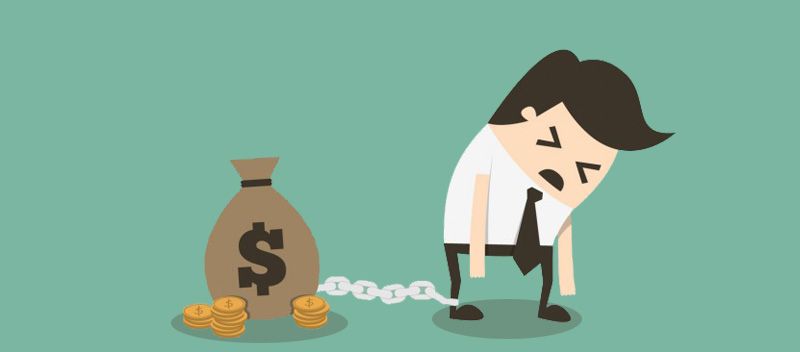What are loans? a comprehensive guide to types, application, and management
A loan is a sum borrowed from a financial institution or lender with the agreement that it will be repaid with interest over a specified period. Loans are essential financial tools that can help individuals and businesses achieve their goals, whether buying a home, financing education, or expanding a business.

What is loan?
A loan is an arrangement where property, money, or other valuable assets are provided to a borrower with the agreement that they will be repaid, usually with added interest or fees. Loans can be a one-time amount or an open-ended line of credit with a specified limit, offering flexibility depending on the borrower’s needs.
They come in various forms, including personal loans for individual needs, commercial loans for businesses, secured loans backed by collateral, and unsecured loans that don’t require collateral. Whether for personal use, business growth, or other purposes, loans are essential to support diverse financial goals.
Overview of loan purpose and necessity
Loans serve various purposes, from covering emergency expenses to funding significant purchases or investments. They provide the necessary funds when cash flow is insufficient, enabling people to make essential purchases or investments without having to save up the entire amount upfront.

Types of loans
Secured vs. unsecured loans
Secured loans are backed by collateral, meaning the borrower pledges an asset (like a house or car) as security for the loan. If the borrower defaults, the lender can seize the collateral. Unsecured loans, on the other hand, do not require collateral. Instead, they are granted based on the borrower’s creditworthiness and ability to repay.
Secured loans: Mortgages, auto loans, home equity loans
- Mortgages are used to purchase real estate and are secured by the property itself.
- Auto loans are used to buy vehicles, with the car serving as collateral.
- Home equity loans allow homeowners to borrow against the equity in their homes.
Unsecured loans: Personal loans, credit cards
- Personal loans can be used for various purposes, such as debt consolidation, medical expenses, or home improvements.
- Credit cards offer a revolving line of credit that can be used for everyday purchases or emergencies.
Personal loans, business loans, student loans, auto loans, home loans, credit lines
- Personal loans are versatile and can be used for a wide range of needs.
- Business loans are designed for business purposes, such as starting or expanding a business.
- Student loans help finance education expenses.
- Auto loans are specifically for purchasing vehicles.
- Home loans include mortgages and home equity loans.
- Credit lines, such as credit cards and home equity lines of credit (HELOCs), provide flexible borrowing options up to a certain limit.
Key components of loans
Principal, interest rate, loan term, and payments
The principal is the original amount borrowed. The interest rate is the cost of borrowing the principal, expressed as a percentage. The loan term is the period over which the loan must be repaid. Payments are the regular installments made to repay the loan, which typically include both principal and interest.
Fixed vs. variable interest rates
Loans can have fixed or variable interest rates. Fixed rates remain constant throughout the loan term, providing predictable payments. Variable rates can change over time based on market conditions, which can lead to fluctuating payments.
Additional fees: Origination, servicing, late payment fees
Loans may come with additional fees, such as origination fees (charged for processing the loan), servicing fees (charged for managing the loan), and late payment fees (charged if payments are not made on time).
How loans work
The loan application process
Applying for a loan involves several steps. First, the borrower must submit an application to the lender. This application includes personal and financial information, such as income, employment status, and credit history.
Steps to apply
- Research and compare lenders.
- Gather necessary documents and information.
- Complete the loan application.
- Submit the application and wait for approval.
Necessary documents and information
Typical documents required for a loan application include identification (such as a driver’s license), proof of income (such as pay stubs or tax returns), bank statements, and details of existing debts.
Approval criteria
Lenders evaluate loan applications based on several criteria, including creditworthiness, debt-to-income ratio, income, and age. Creditworthiness is determined by the borrower’s credit score and history. A lower debt-to-income ratio indicates better financial stability. Stable income and age also play a role in the approval process.
Collateral requirements for secured loans
For secured loans, borrowers must provide collateral. This could be real estate for a mortgage or a vehicle for an auto loan. The value of the collateral must typically exceed the loan amount.
Understanding interest rates and impact on total repayment
Interest rates significantly impact the total repayment amount. Higher interest rates increase the cost of borrowing, while lower rates reduce it. Understanding how interest rates work can help borrowers make informed decisions about their loans.
Repayment terms
Loan repayment terms vary depending on the type of loan and the lender. Common terms range from a few months to 30 years. Monthly payments are calculated based on the principal, interest rate, and loan term. Some loans offer equated monthly installments (EMIs), which spread the repayment evenly over the loan term.
Prepayment and foreclosure options
Many loans offer the option to prepay, or pay off the loan early, often with certain conditions or fees. Prepayment can save on interest costs but may incur a prepayment penalty. Foreclosure occurs when the borrower fails to repay the loan, leading the lender to seize the collateral.
Benefits and drawbacks of loans
Pros
Access to funds for various needs, potential for lower interest rates on secured loans, financial support, tax benefits
- Loans provide access to funds for various needs, enabling significant purchases or investments.
- Secured loans often offer lower interest rates due to reduced risk for the lender.
- Loans also provide financial support during emergencies or cash flow shortages.
- Additionally, some loans, like mortgages and student loans, offer tax benefits.
Cons
Risk of losing collateral, higher costs for risky borrowers, risk of debt, impact on credit score
- The risk of losing collateral is a significant drawback of secured loans.
- Borrowers with lower credit scores may face higher interest rates and fees, increasing the cost of borrowing.
- Taking on too much debt can lead to financial strain and potential default.
- Missing loan payments can negatively impact credit scores, making future borrowing more difficult.
Tips for getting a loan
Improving credit score, managing debt
Improving your credit score can increase your chances of loan approval and result in lower interest rates. Pay bills on time, reduce outstanding debt, and correct any errors on your credit report. Managing existing debt effectively is also crucial for maintaining a good credit score.
Choosing the right type of loan
Choosing the right type of loan depends on your needs and financial situation. Consider the purpose of the loan, the amount you need to borrow, and your ability to repay. Compare different loan options to find the best fit.
Comparing lenders and understanding terms and conditions
Comparing lenders can help you find the best loan terms. Look at interest rates, fees, repayment terms, and customer reviews. Understanding the terms and conditions of a loan agreement is essential to avoid surprises and ensure the loan meets your needs.

Loan management tips
Managing your repayments effectively
Effective loan management involves making timely payments, keeping track of repayment schedules, and staying within your budget. Setting up automatic payments can help ensure you never miss a due date.
Tips for maintaining a good credit score
Maintaining a good credit score requires consistent financial responsibility. Make all loan payments on time, avoid maxing out credit cards, and limit the number of new credit applications. Regularly check your credit report to stay informed about your credit status.
What happens if you can’t repay a loan?
If you can’t repay a loan, it’s essential to take action quickly. Staying current on loan repayments is crucial to managing your finances and avoiding additional fees. When considering a loan, carefully assess whether the repayments fit within your budget.
Setting up a Direct Debit can simplify the process, automatically deducting payments from your account. Regularly checking your balance ensures you have enough funds to cover these payments.
If you’re unable to make a repayment, reach out to your lender promptly. They may offer solutions to help you manage. Falling behind can lead to arrears, where you owe overdue amounts, making it challenging to catch up. Missed loan repayments can also harm your credit score, affecting future financial opportunities.

FAQs
What is a loan?
A loan is a sum of money borrowed from a lender that must be repaid with interest over a specified period. Loans can help individuals and businesses achieve goals like buying a home, financing education, or expanding a business.
What are the different types of loans?
Loans can be categorized into secured and unsecured loans. Secured loans, like mortgages and auto loans, require collateral. Unsecured loans, such as personal loans and credit cards, do not require collateral but are based on creditworthiness.
How does the loan application process work?
To apply for a loan, you need to research and compare lenders, gather necessary documents (like ID, proof of income, and bank statements), complete the application, and submit it. Lenders evaluate applications based on criteria such as creditworthiness and debt-to-income ratio.
What are the key components of a loan?
Key components include the principal (amount borrowed), interest rate (cost of borrowing), loan term (repayment period), and payments (regular installments of principal and interest). Loans can have fixed or variable interest rates and may include additional fees like origination and late payment fees.
What are the pros and cons of taking out a loan?
Pros include access to funds for various needs, potentially lower interest rates on secured loans, financial support, and possible tax benefits. Cons include the risk of losing collateral, higher costs for risky borrowers, potential debt accumulation, and impact on credit score.


